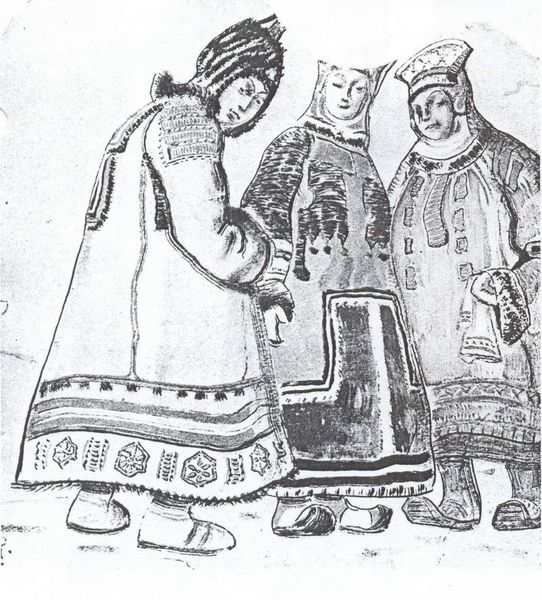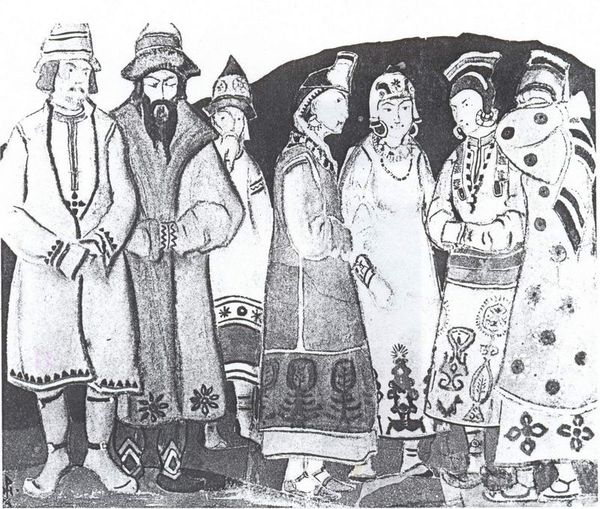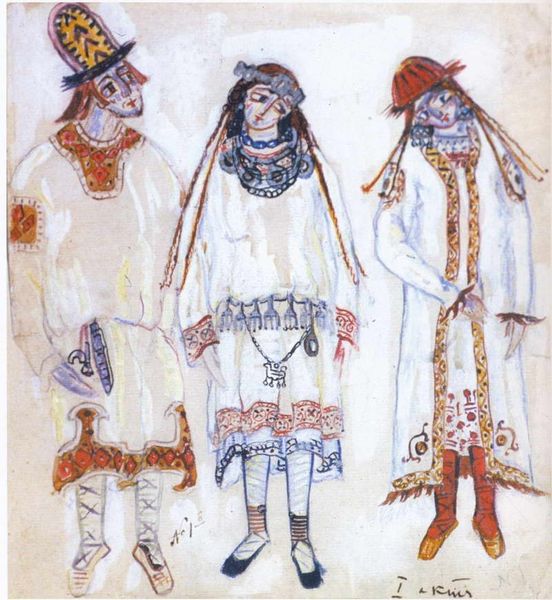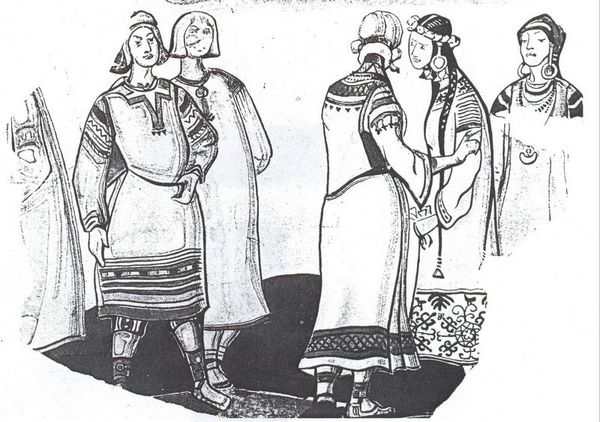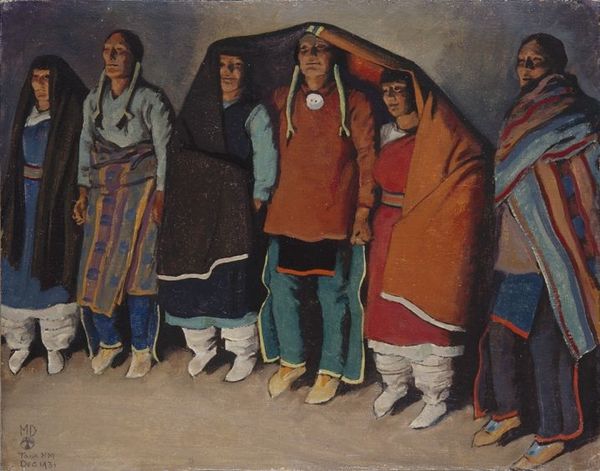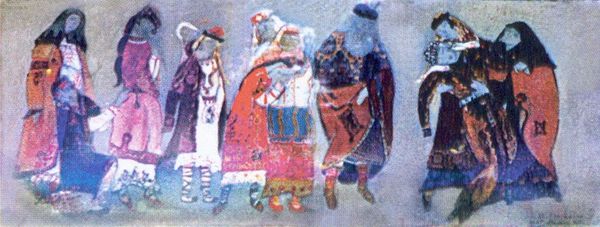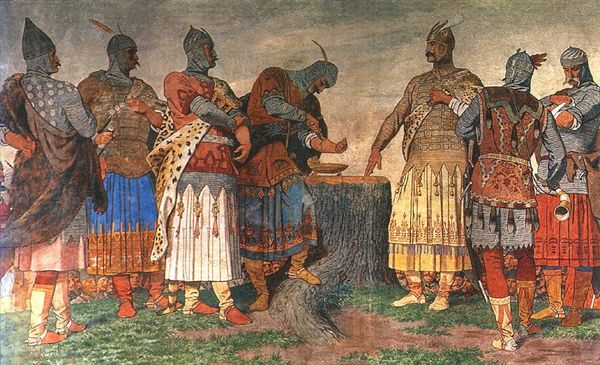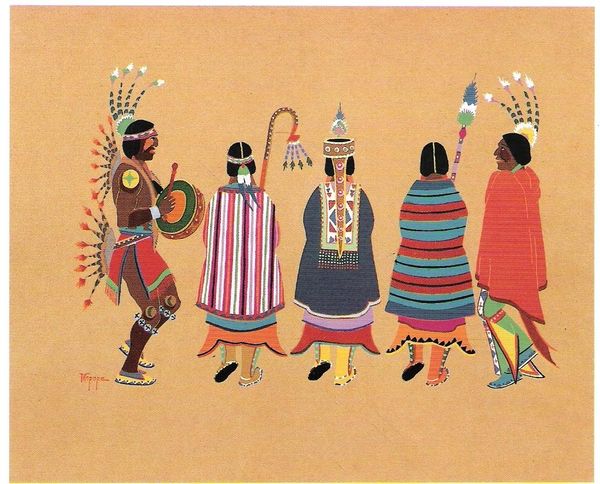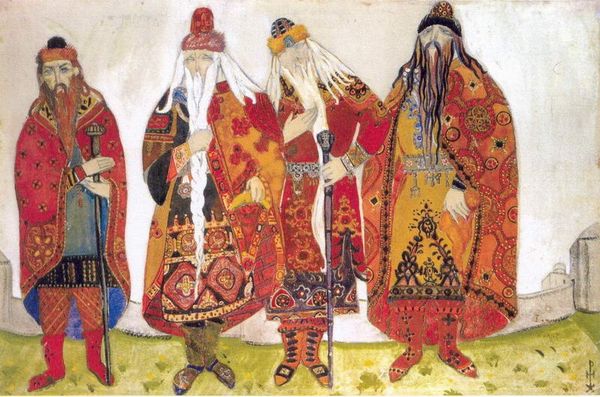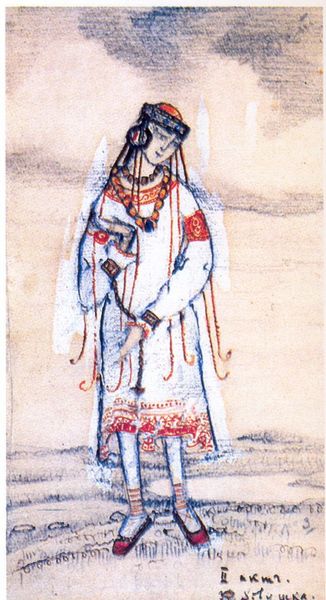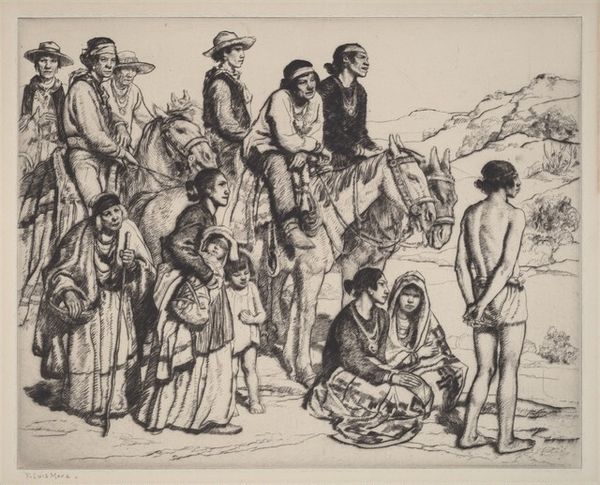
drawing, pencil, graphite
#
portrait
#
drawing
#
figuration
#
pencil
#
costume
#
graphite
#
history-painting
Copyright: Public domain
Curator: Here we have Nicholas Roerich's 1920 pencil drawing, "The Scene with Five Figures in Costumes." Editor: The starkness of the graphite immediately catches the eye. It's minimalist, yet these figures seem imposing, grounded by the textures in their layered garments. Curator: Roerich was deeply invested in depicting pre-modern Russian history and Slavic paganism. His set and costume designs for Stravinsky’s "Rite of Spring" brought similar figures to life on stage, creating something of a pre-historic trend. Editor: Note how each figure differs slightly in stature and garb, yet the patterns across their attire create a unified rhythm. It makes one wonder about the formal principles Roerich may have applied, balancing diversity with formal cohesiveness through pattern and texture. Curator: Precisely. Roerich likely meant for each costume detail to read as authentic to the period. He studied folklore extensively, imbuing his works with details of traditional craft. I suspect his engagement with theater sharpened his focus on presenting characters legible within a narrative, too. Editor: Narrative perhaps muted. With its grayscale palette, the work maintains a static and even melancholic feel. One almost overlooks, or under appreciates, the detail of line work as a result. There's a wonderful play between linear form and more gestural shading to give bulk and substance. Curator: What’s fascinating is Roerich’s attempt to envision an almost mythic past in the present—Russia’s turbulent early 20th century, when folk culture provided alternative models and identities. It was the politics of imagery indeed. Editor: It seems we're drawn in, decades later, by that very tension – this contrast between the historical subject and the timeless visual components. The sharp details against muted shading lends the scene an ancient but remarkably enduring quality. Curator: Well said, considering art's enduring role to not just reflect history but preserve it in the popular imaginary. Editor: An idea perhaps echoed in his technique which manages to strike both delicacy and monumentality in what might at first glance look like a study of Slavic fashion.
Comments
No comments
Be the first to comment and join the conversation on the ultimate creative platform.
